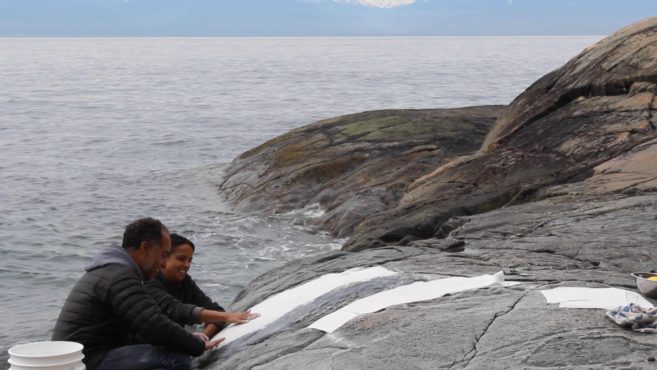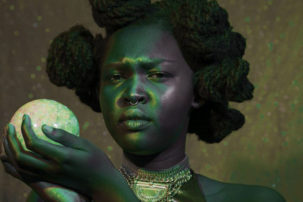In a politically charged time rife with instability, it stands to reason that artists would draw attention to injustices being inflicted upon citizens and the land—as some have done for social and environmental movements throughout history. But when the truth is more frightening than fiction, many artists are producing work more in line with documentary than with creative rendering. As the blockbuster exhibition “Anthropocene” comes to a close at both the National Gallery of Canada and the Art Gallery Ontario, photojournalist and artist Chris Donovan speaks to the position of documentary photography within the art world, and how sometimes capturing a story can be more impactful than telling it.
In 2018 alone, Chris Donovan was awarded Canadian Photojournalist of the Year and Canadian Picture of the Year at the National Pictures of the Year Contest, and was named among the top 100 emerging photographers by the Magenta Foundation. Originally from Saint John, New Brunswick—a city with Canada’s largest oil refinery, and where 20 per cent of citizens live below the poverty line—Donovan is now based in Toronto but photographs communities that have been impacted by heavy industry worldwide. He sat down with me to discuss rampant environmental classism at home and abroad, his new body of work and how he builds relationships and awareness through his photography.
Christiana Myers: Being from Saint John myself I can totally understand how you would be influenced by industry. You see it everywhere and it employs a huge percentage of the population. It’s also largely monopolized by Irving—they basically run the oil industry, lumber, and even the newspapers. What are you working on right now and what motivates you to capture the images that you do?
Chris Donovan: The series [I am currently working on] is called The Cloud Factory. Once when I was a kid, driving over the Harbour Bridge with my dad, I looked over at the pulp mill and asked him if that makes all the world’s clouds. He just said, “No, they make money.”
I thought about it for a long time and I’m still thinking about it, so that’s a moment I can point to that’s been totally foundational for all the work I do. It’s the reason I work in Flint, in Mexico and Kenya and all these places. They have this wealth divide, this dynamic between the industry and the communities. And then I started to realize that was what was happening in Saint John.
The whole business model seems to be owning a city. People close to me have even expressed concern over me doing this project because they’re scared I might be sued—and they may not be wrong.
One of the chapters of the project focuses on child poverty. Saint John has a child poverty rate almost double the national average. To me, poverty and industry are intrinsically linked. It makes sense for industries to operate in places where people are poor and they can’t afford to leave, and then they employ those people and have them basically trapped and they get their loyalty because industry is paying their bills. Which in this case is the industry that’s also polluting their environment. It’s a super-old story—a story as old as money.
CM: When you’re meeting these people, what’s the first step? When you go into these environments how are you received? Consent is obviously really important.
CD: People generally know when you’re a genuine person—if you’re honest with people about your intentions. It takes a lot of time. I often spend days with people before I even take a picture. I also will tell people about myself. I don’t want to go into somewhere and just say, “Tell me all about your life, I’m going to photograph it.” You have to share. And there’s such a history of white dudes from North America, travelling the world, thinking they have the right to witness things just because they have a camera. You don’t have the right to shit. People have the right to their autonomy and if they really like you and they care about what you’re doing, then maybe they’ll let you photograph it.
CM: Right, it’s a privilege in itself just to be able to be there.
 Chris Donovan, from the series The Cloud Factory, 2013.
Chris Donovan, from the series The Cloud Factory, 2013.
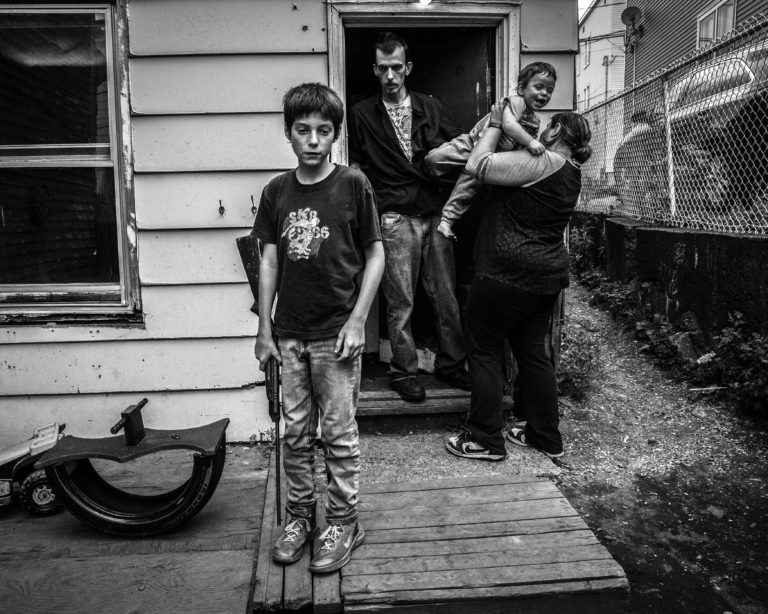 Chris Donovan, from the series The Cloud Factory, 2018.
Chris Donovan, from the series The Cloud Factory, 2018.
CM: You started noticing these issues at home and that motivated you to recognize similar power structures in other places, too, and to seek them out.
CD: Yeah, this is the reason I went to Flint, Michigan. Like Saint John, it’s a perfect example of industrial capitalism. I went to Flint in early 2015 for the first time. The water crisis news broke in 2014. And I waited eight months before I went. All the big-name photographers were already there. Wayne Lawrence is an incredible photographer based in New York and works for National Geographic. You’ve probably seen the images, at least the one picture of his: these three kids in their church uniforms holding the water. It kind of went viral. People were taking really incredible stuff but I knew there was more to what was going on and it was already being covered so well, so I waited.
I started reading the local news in Flint and I read that the last two basketball and football teams were merging. There were five separate [teams] not long ago and then these high schools kept closing and closing. It was framed in this small throwaway line in a local news article that was a preview of the new team. I was like, “There’s definitely something bigger here that says something about the American condition, not just sports in Flint.” Flint is not a unique thing in America or in North America or even in the world. It’s so similar to Saint John—this super-industrial town, this company town. So I started photographing sports in Flint and it was a way to bring back the story that I cared about—about the water and the inherent racism. Flint is over 50 per cent Black, now the poorest city in America, and it’s been getting poorer because the people who can afford to leave do leave.
CM: A lot of people can separate themselves from the experience of not having access to water—there’s a privilege divide there—but a lot of people can relate to the narrative of sports. So you’re finding these access points to the story for people who either haven’t been interested in it before, or to remind others that it’s still happening without telling the same story.
CD: It can be too much of the same over a long period of time—the burnout is real—which is why I think my work for ESPN reached a lot of people that I think didn’t even realize that this water crisis was still going on. There was only one picture in the story that was really about the water crisis: in the locker room where there’s a water fountain next to a water cooler and this kid is pouring water from the water cooler into his mouth. It’s these subtle differences that become blatant reminders that there is life outside the crisis.
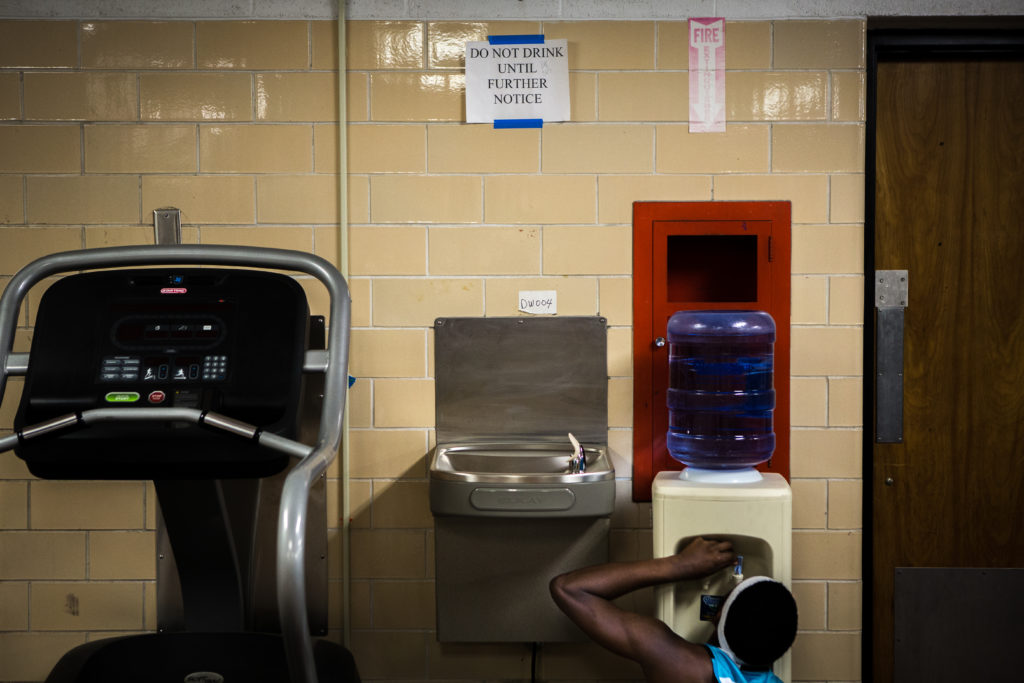 Chris Donovan, from the series This Is Flint, 2018.
Chris Donovan, from the series This Is Flint, 2018.
CM: You operate in both the media world and the art world. You’ve had exhibitions and are working on a book, but you also publish in ESPN, the Globe and Mail and the New York Times. It seems to me your work exists as one continuous practice and it comes down to whichever outlet wants to put it out there. There’s something to be said for the most effective method of getting access to this broader public that the art world is always after. Coming from an art background, what’s your perspective on the art world versus photojournalism?
CD: I think it’s inevitable that the photojournalism world merges into the art world. Artists have been telling nonfiction stories forever. But I think that photojournalists are less comfortable sometimes calling themselves artists, because they might see it still as pretentious or far from what they’re doing. It’s interesting to me that so many people in the photojournalism world are fazed by calling themselves artists, when an artist would never really be fazed by saying they’re telling a nonfiction story.
There’s also this attachment to the word “truth” in journalism that I find really interesting. I do believe that there’s no one truth ever—there are many people’s truths. And even when you’re getting quotes from people you’re telling their truth. You say, “Oh, this is the quote. It’s the truth.” That’s never really the case. Even photos aren’t the absolute truth—you chose a frame.
CM: Right, it’s going to be subjective no matter what, down to the way people view the images. What is your perspective on art versus media audiences?
CD: I want to say something, so the more people that see it the better. The art world can be such a bubble. It’s really easy to just be making art for other artists.
CM: In the art world, you’re kind of preaching to the choir. You’re engaging people that are generally already invested or claim to be invested in these social issues at some level.
CD: You’re putting the guillotine in the hands of people who are already geared up for the revolution. You’re often not adding to the conversation, really. But the art world can offer a lot of opportunities, and you have more time. When I started to veer into editorial stuff and working with magazines and newspapers, I got frustrated because it can be so limiting. At the end of the day, these media outlets are companies that need to make money and they want clicks and they want to sell ads. I became really frustrated with it in Flint because the story became old news. So I started returning.
I don’t see circulating the work through media outlets and galleries to be all that different. I think more difference lies in the way it’s received because being in the same physical space as an image changes things. In some ways a newspaper is even more intimate than a gallery exhibition, especially an opening where people are walking around and socializing and maybe not spending the time with the work. You pick up a newspaper to read it so you’re probably looking at the images for longer than you would in an exhibition. The image quality is terrible, but I’m not a purist when it comes that.
 Chris Donovan, from the series This Is Flint, 2018.
Chris Donovan, from the series This Is Flint, 2018.
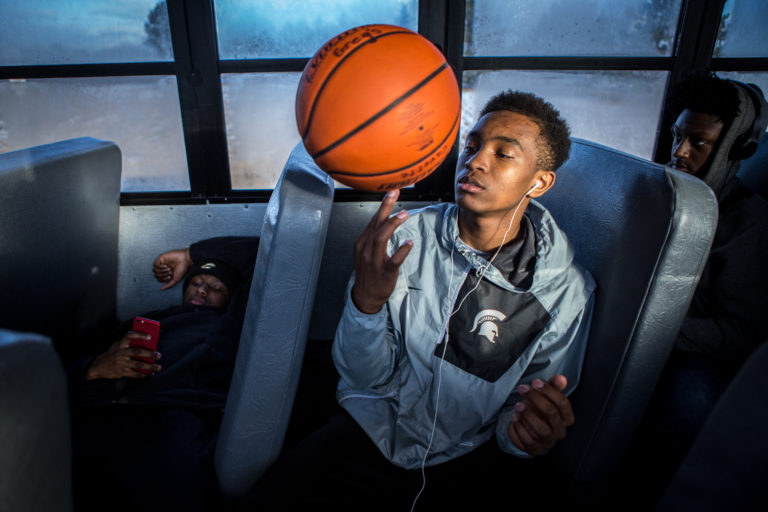 Chris Donovan, from the series This Is Flint, 2018.
Chris Donovan, from the series This Is Flint, 2018.
CM: On the subject of scale and image quality, I’m wondering about your thoughts on the “Anthropocene” exhibition. That’s obviously photojournalistic work, framed in an art context that deals with similar themes of climate change and extraction but from this very zoomed-out, high-res perspective. They’re really powerful images and you’re seeing the effect on the landscape but I’m wondering, as someone who photographs people, in fairly intimate settings, how you see the work.
CD: It’s just a different approach. It’s the difference between photographing a physical person or the remnant of a person or something they’ve done. I think they’re closer than meets the eye.
CM: That’s true, although I find in those drone images it’s illustrating the human impact on the environment less than the environmental impact on humans. They sort of villainize people, in a way, whereas your images villainize industry, which I suppose is still people, but on the other side.
CD: They’re still villainizing the people on the same side: the people who are at the top and are making the decisions.
CM: Yeah, your work is just maybe a more sympathetic approach.
CD: Maybe more relatable because most people haven’t looked from a helicopter onto a mine. It’s more fantastic imagery, it blows you away. You have that “wow” reaction whereas with a portrait of somebody who’s been poisoned by fallout, you might not necessarily have that.
CM: It’s slower, quieter.
CD: Slower is a good word. I’m sure Edward Burtynsky also works slowly, but he’s getting to know a landscape and I’m getting to know people. They’re both relationships and they both take time, but I think, for me, in some ways a relationship with a person is a bit more complicated, because they bring all their experiences and you bring yours. And the environment is certainly complicated but in some ways it just brings what it is. So it takes a long time to build these kind of relationships where you can have intimacy, and you need to have intimacy for the viewer to have intimacy because that’s the ultimate goal: for the viewer to feel like they know the people in the images and that they can relate to them, like they’re their friends. So I have to be friends with the people I’m photographing. Almost always.
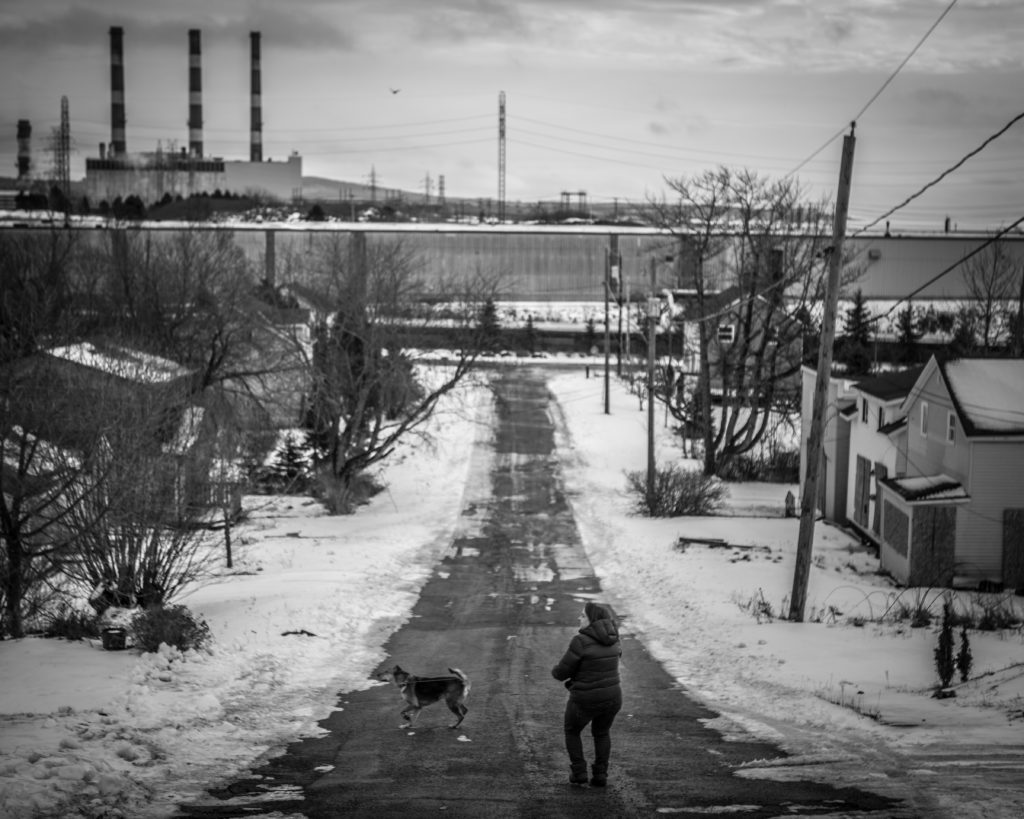 Chris Donovan, from the series The Cloud Factory, 2019.
Chris Donovan, from the series The Cloud Factory, 2019.

 Chris Donovan, from the series The Cloud Factory, 2019.
Chris Donovan, from the series The Cloud Factory, 2019.
